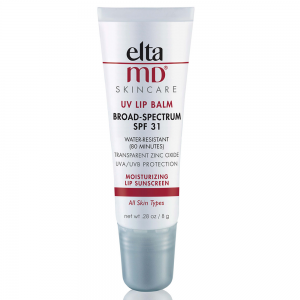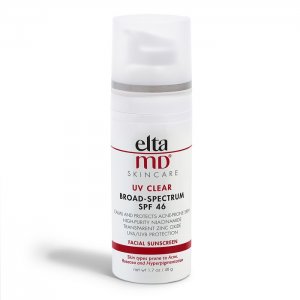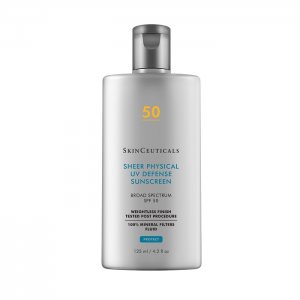During the heat of summer, layering on sunscreen makes perfect sense. You don’t want to end your day of fun on the lake with a week of misery dealing with a sunburn, but when it comes to spending time outdoors in the winter, people are less likely to remember the protective sunscreen before they head out. U.S. Dermatology Partners physician Dr. Alexandra Theriault of U.S. Dermatology Partners in Denver and Littleton, Colorado, is a big proponent of keeping skin protected with sunscreen all year round. In this blog, Dr. Theriault discusses some of the top reasons it’s so important to apply your sunscreen in the winter.
1 – Snow & Ice Reflect Sunlight Intensifying UVA/UVB Rays

Shop sunscreens on dermskincare.com »
2 – Wind & Low Moisture Levels are Tough on Skin
You have likely noticed that your skin is drier and more sensitive when it’s cold outside. During the winter, there is less humidity and often increased wind speeds, so your skin is constantly stripped of moisture. Dryness reveals every wrinkle and fine line in the skin’s surface, and it makes your skin more likely to crack or tear, exposing you to infection risk. Using sunscreen in the winter can help restore some of your skin’s depleted moisture.
3 – The Ozone Layer is Thinnest in Winter
The stratosphere is a layer of protective gases that surround the planet. This protective layer of gases is referred to as the stratosphere because the gases are stratified (layered). Near the top of the stratosphere (furthest from the earth), is the ozone layer that absorbs and reflects the UV rays from the sun. Ozone production increases more quickly in warm temperatures and more slowly in cold. For this reason, the ozone layer is thinner at the earth’s poles where temperatures are very low, and the coverage is thinnest elsewhere around the globe during the colder winter months. That means even though the sun doesn’t feel as hot, you are actually exposed to greater intensity UV rays.
4 – Keep Your Skin Looking Young & Healthy Longer

Shop sunscreens on dermskincare.com »
5 – Indoor Lights are Damaging to Skin as Well
Even if you’re not planning to go outdoors, new studies are indicating that the light from computers, TVs, cellphone screens, and even lamps and other types of indoor lighting may be adding to skin damage. Daily application of sunscreen will protect your skin from damage caused by exposure to any light waves.
6 – Winter Weather Makes Sunscreen Wear off More Quickly
Sweating in the heat of summer, going for a swim, or spending time on sandy beaches will all make sunscreen come off more quickly. Thus, you need to reapply regularly. Many people don’t realize that the harsh winter weather conditions will actually reduce sunscreen’s effectiveness just as quickly. Wind, snow, sleet, and the low temperatures themselves all combine to weaken sunscreen, so you’ll need to reapply frequently for optimal protection. Lunchtime is the perfect time for reapplication of your sunscreen in the winter months.
7 – You are Still at Risk for Skin Cancer from Sun Damage
According to Dr. Theriault, “For years, it was believed that UVB rays, which are not as strong during the winter, were the more dangerous. These are the rays linked to the noticeable forms of skin damage like sunburn, age spots, and multiple forms of skin cancers. Today, we know that UVA rays may be much more damaging even though they don’t cause immediate damage to the skin like sunburns. Instead, UVA rays penetrate deeper and are the cause of the deadliest form of skin cancer, melanoma. Unlike UVB rays, the strength of UVA rays is consistent all year long.”
8 – The Effects of Sun Exposure are Cumulative
New research and the publication of the findings of long term studies are revealing important information about the cumulative effects of sun exposure. It seems that the more time your skin is exposed to UVA/UVB rays over a lifetime, the greater your risk for skin cancer. Studies indicate that high levels of lifetime sun exposure are responsible for most cases of basal and squamous cell skin cancer.
9 – You’re Closer to the Sun

Shop sunscreens on dermskincare.com »
10 – Use Up Your Sunscreen Before it Expires
Even though this shouldn’t be your only reason for wearing sunscreen in the winter, it’s certainly an added benefit. Most sunscreen begins to diminish in efficacy after just 12 months, so if you’re holding onto your tube of sunscreen to use next summer, you may find yourself getting burned more easily by the less effective sun protectant. Don’t hang on to that half-empty bottle of sunscreen until next summer. Use it up over the winter to keep your skin looking great.
Visit U.S. Dermatology Partners to Learn More about using Sunscreen in the Winter
If you need help finding effective sunscreen or have questions about skin health in general, the U.S. Dermatology Partners team would love to help. If you’re in the Denver or Littleton area, Dr. Theriault would be happy to schedule an appointment with you. Otherwise, we make it easy to set up your visit with one of our local offices. Simply fill out our online request form, and one of our experienced team members will be in touch with you soon.
Find a location near me
or


